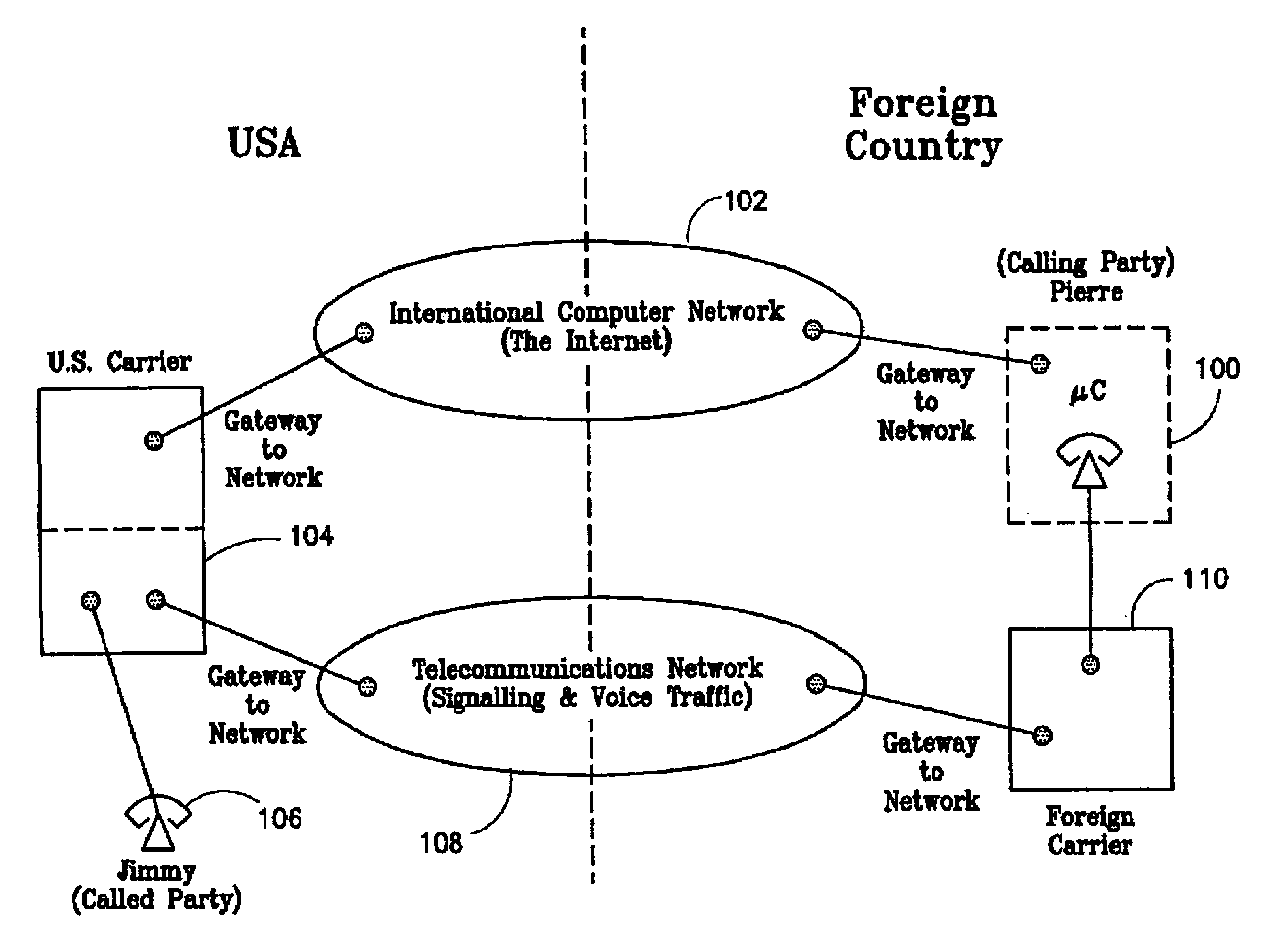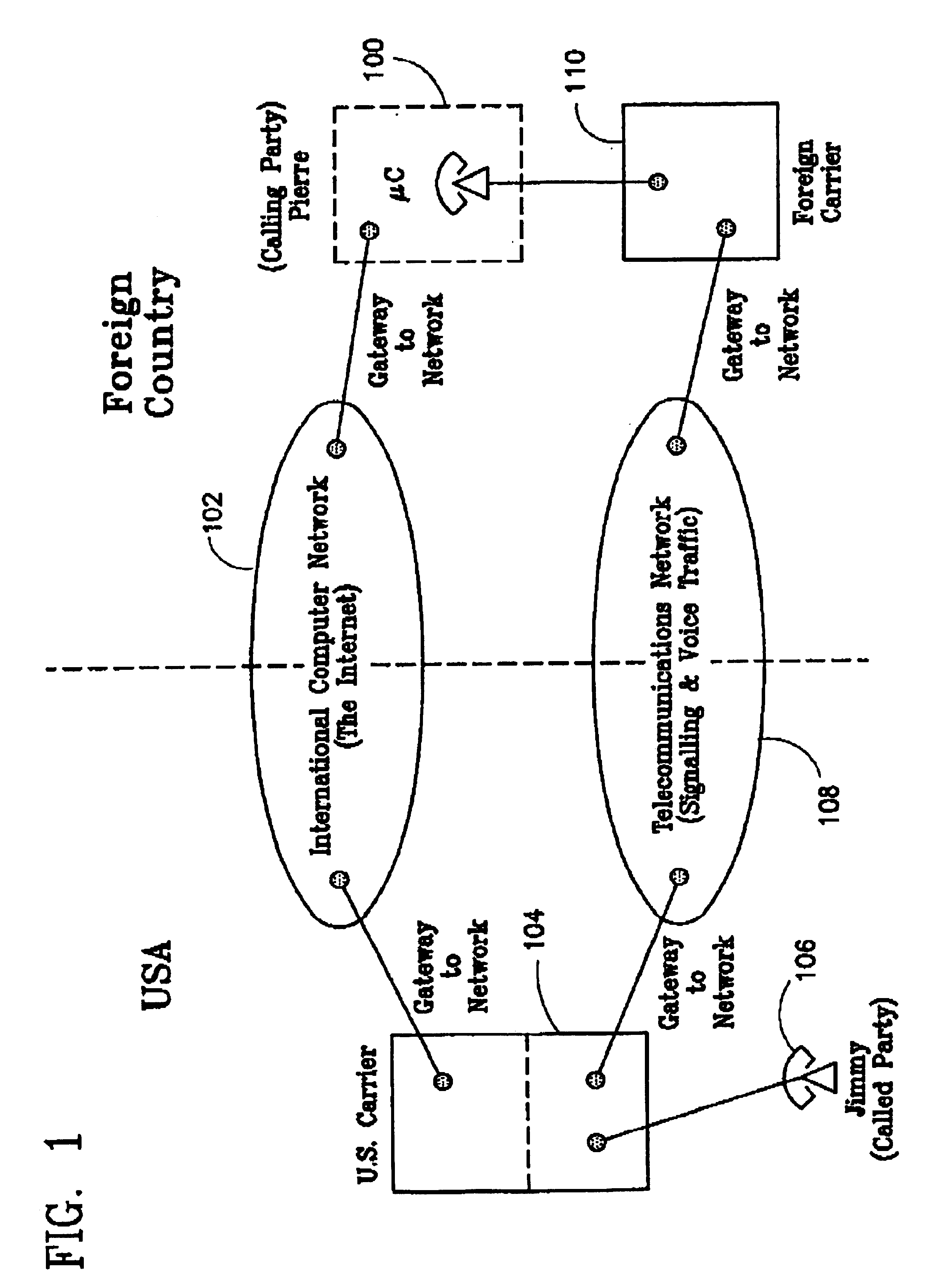Reverse call origination via a packet switched network
a packet switched network and reverse origination technology, applied in the field of reverse origination of telephone calls, can solve the problems of high cost of telecommunication equipment and services, affecting the foreign relations between the u.s. and other countries, and the unanswered high volume calls that could be easily detected and consequently blocked by the international carrier, so as to achieve the effect of fewer lines, reduced costs for providing, and reduced costs for customers
- Summary
- Abstract
- Description
- Claims
- Application Information
AI Technical Summary
Benefits of technology
Problems solved by technology
Method used
Image
Examples
Embodiment Construction
One embodiment of the disclosed invention includes a calling party located in a foreign country who desires to call a party in the U.S. using the reverse call origination. According to this embodiment of the present invention as shown in FIG. 1, the calling party, i.e., Pierre, 100 has access to a non-signaling network, i.e., a global computer network such as the Internet 102, for example. To take advantage of the U.S. telephone rates which are lower than telephone rates in most other countries, the calling party 100 accesses the computer network 102 and sends a request for the reverse call origination to an electronic mailbox on the on-line computer service. The mailbox may be a computer account which the operator of the computer network allocates to the owner of the account upon request and / or fee. The account may be set up with various privileges requested by the owner, such as the size, authorized access, etc. For example, the owner may require the users of the computer network ...
PUM
 Login to View More
Login to View More Abstract
Description
Claims
Application Information
 Login to View More
Login to View More - R&D
- Intellectual Property
- Life Sciences
- Materials
- Tech Scout
- Unparalleled Data Quality
- Higher Quality Content
- 60% Fewer Hallucinations
Browse by: Latest US Patents, China's latest patents, Technical Efficacy Thesaurus, Application Domain, Technology Topic, Popular Technical Reports.
© 2025 PatSnap. All rights reserved.Legal|Privacy policy|Modern Slavery Act Transparency Statement|Sitemap|About US| Contact US: help@patsnap.com



